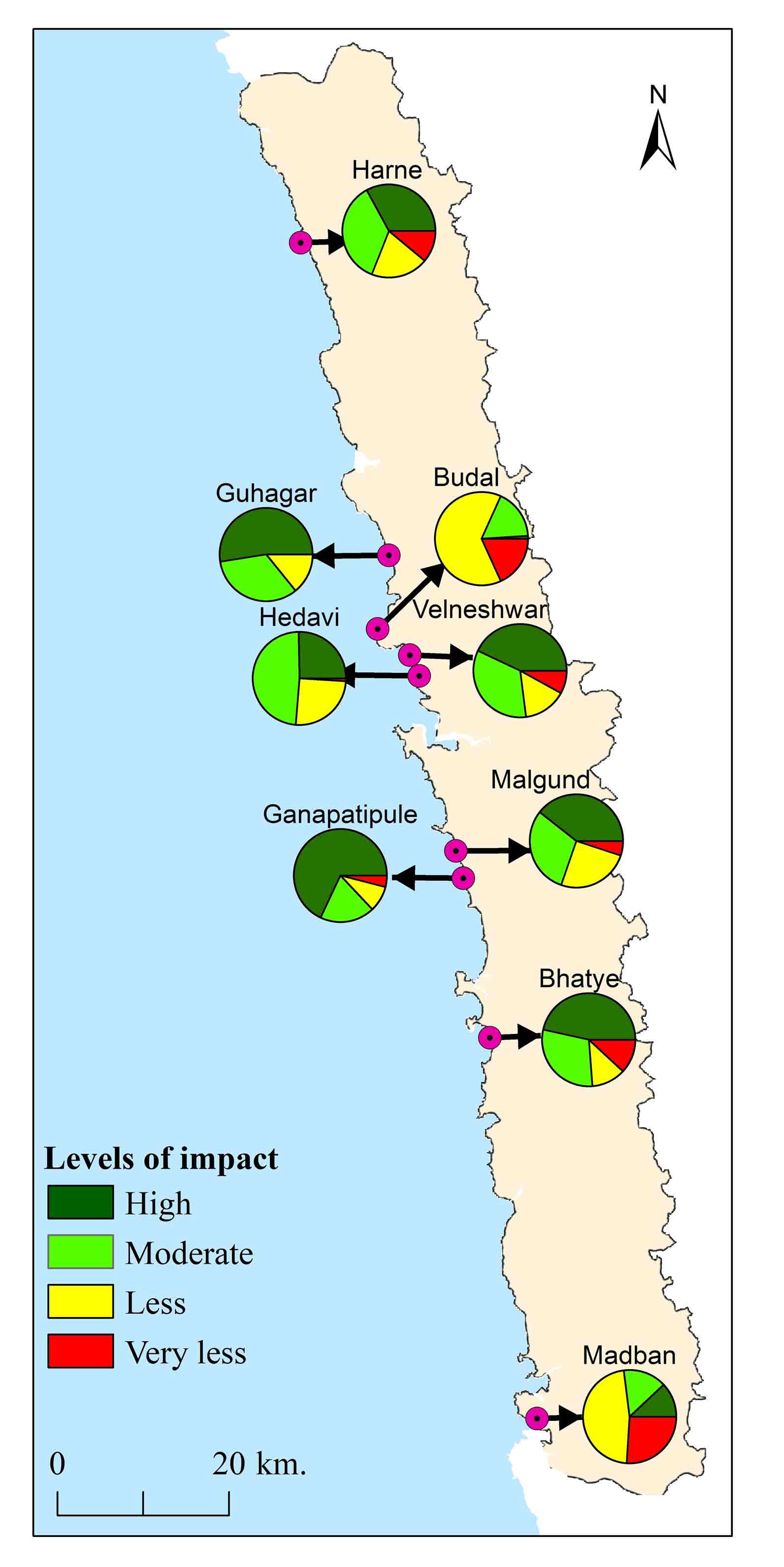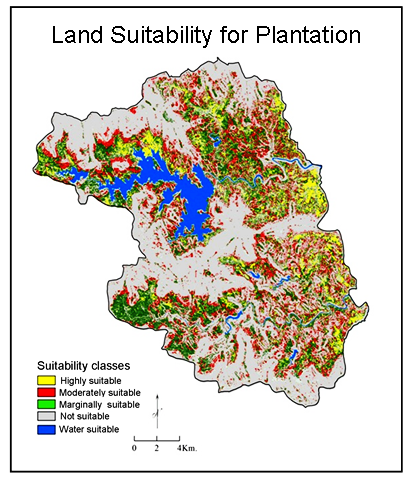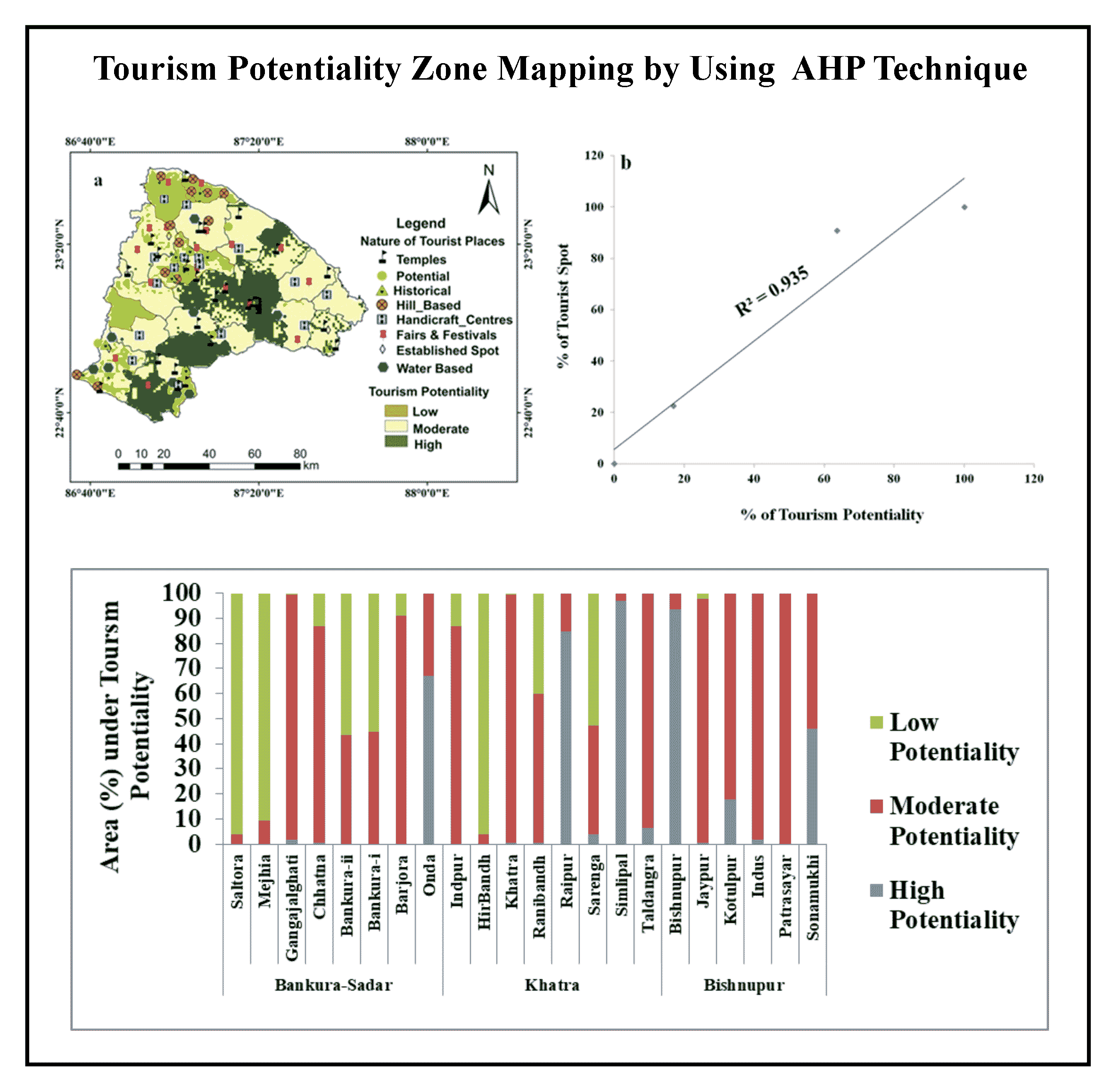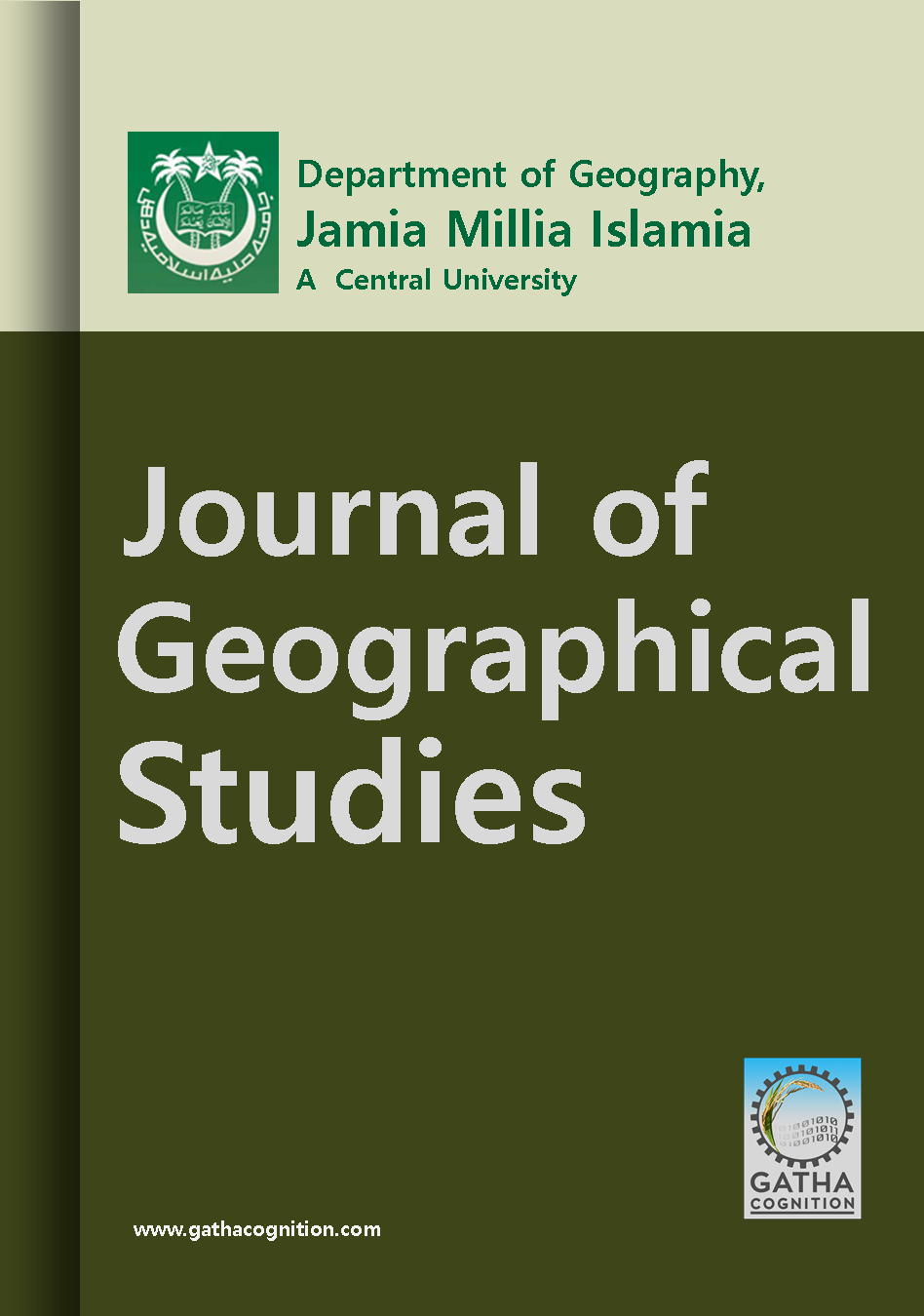Article Title :
Use of AHP based Weighted Analysis for Impact Assessment of Coastal Tourism in Ratnagiri District, Maharashtra (India): Respondents’ Point of View 
6 (2022)
1-32
Analytic Hierarchy Process , Coastal area , Experts’ Opinion , Tourism , Weighted overlay


The MCDM-AHP technique was used for impact assessment of tourism on socioeconomic development in the coastal area with respondents’ point of view. The responses from native people were recorded using questionnaires through interviews about selected nine criteria including accessibility and connectivity, amenities, health care facilities, business, employability, standard of living, cultural values, agriculture and fisheries, and immovable properties. The literature review, fieldwork and experts’ opinions are fundamental keys to select the criteria and determination of ranks. About 35.55% respondents reported higher impact of tourism, 29.14% respondents informed moderate impact, 25.69% respondents reported less impact and 9.62% respondents reported very less impact of tourism activities on development in the region. The development of reported criteria varies according the beach area and relative location of the beaches on the shoreline. The beaches located far south and away from district headquarter show relatively less development. The focus of investment should be concentrated on development of the accessibility and connectivity, required amenities, health care facilities, small-scale business, employability, cultural values, agriculture and fisheries to improve the tourism activities for improving standard of living of native people in the region. The methodology, techniques and results achieved in this study can be useful for planning and monitoring the tourism activities for sustainable and uniform development in the similar areas.

The tourism activities in the study area are useful for socioeconomic development of the native people.
The MCDM-AHP weighted analysis was used for impact assessment of tourism on socioeconomic development in this coastal area with respondents’ point of view.
About 35.55% respondents reported higher, 29.14% moderate, 25.69% less and 9.62 % very less impact of tourism activities.
The focus of investment should be concentrated on development of the required amenities and services to improve the tourism activities.
Alfane, E., 2020. Tangible immovable heritage of Legazpi City, Philippines: Significance to cultural tourism. BU R and D Journal, 23(1), 15-26.
Asmamaw, D. and Gidey, E., 2018. Identification of potential eco-tourism site suitability using AHP and GIS, a case of hugumburda forest and its surrounding areas, advance in environmental waste management and recycling Ethiopia. Advance in Environmental Waste Management and Recycling, 1(1),1-4.
Botero, C., Pereira, C., Anfuso, A., Cervantes, O., Williams, A.T., Pranzini, E. and Silva, C. P., 2014. Recreational parameters as an assessment tool for beach. Green, A. N. and Cooper, J. A. G. (Eds.), Proceedings 13th International Coastal Symposium (Durban, South Africa). Journal of Coastal Research, 70, 556-562.
Duriyapong, F. and Nakhapakorn, K., 2011. Coastal vulnerability assessment: A case study of Samut Sakhon coastal zone. Songklanakarin Journal of Science and Technology, 33 (4), 469-476.
Gnanapala, W. and Sandaruwani, J., 2016. Socio-economic impacts of tourism development and their implications on local communities. International Journal of Economics and Business Administration, 2(5), 59-67.
Irandu, E., 2004. The role of tourism in the conservation of cultural heritage in Kenya. Asia Pacific Journal of Tourism Research, 9(2), 133-150,
Karlekar, S., Thakurdesai, S. and Kar, A., 2017. Geomorphological field guide book on Konkan and Goa Coasts. Indian Institute of Geomorphologists (IGI), Allahabad, 1-32.
Lee, C. and Lee, J., 2012. Analysis of the relationships between the hospitality workforce and job-satisfaction factors according to age, gender, native language and racial-ethnicity. Journal of Tourism and Hospitality, 1(5), 1-8.
Liu, A. and Wall, G., 2006. Planning tourism employment: A developing country perspective. Tourism Management, 27,159-170.
Mahmud, I. and Muhammad, I., 2018. Exploring the tourism potentials of cultural landscape of Nupe communities in central Nigeria. Contemporary Issues and Sustainable Practices in the Built Environment. School of Environmental Technology Conference, 1383-1392
Masadeh, R., Nasseef, M., Sunna, C., Suliman, M. and Albawab, M., 2017. The Effect of Hotel Development on Sustainable Tourism Development. International Journal of Business Administration, 8 (4), 16-33.
Meyer, D. and Meyer, N., 2015. The role and impact of tourism on local economic development: A comparative study. African Journal for Physical Health Education, Recreation and Dance, 21(1), 197-214.
MSGRD [Maharashtra State Gazetteers, Ratnagiri District], 1962. Government of Maharashtra, Bombay Directorate of Government Printing, Stationery, 1-90.
Navale, S. B., Suryawanshi, R. S. and Bhagat, V. S., 2021. A morphological study for identified the potential of ganpatipule coastal tourism in Western Maharashtra (India): Analytical hierarchy process. Applied Ecology and Environmental Sciences, 9(3), 322-335.
Ruano. M., 2018. Decision making within the tourism industry with AHP: Determining key influential factors affecting foreign visitors’ decision to revisit Belize, Central America. Ph.D. Program in Management- College of Management, 1-11.
Wijerathne, A. and Senevirathna, K., 2020. Identification of the potentiality and socio economic impacts of tourism in Minneriya National Park using GIS techniques. Wildlanka, 4(2), 48-57.
Zhang, H., Gu, C., Gu,L. and Zhang,Y., 2011. The evaluation of tourism destination competitiveness by TOPSIS and information entropy: A case in the Yangtze River Delta of China. Tourism Management, 32, 443-451.
Zhensikbayeva, N., Saparov, K., Chlachula, J., Yegorina, A., Uruzbayeva, N. and Wendt, J., 2018. Natural potential for tourism development in Southern Altai (Kazakhstan). GeoJournal of Tourism and Geosites, 1(21), 200-212.
Zolekar, R. B. and Bhagat, V. S., 2015. Multi-criteria land suitability analysis for agriculture in hilly zone: Remote sensing and GIS approach. Computer and Electronic Agriculture, 118, 300-321.
Zolekar, R. B. and Bhagat, V. S., 2018. Multi-criteria land suitability analysis for plantation in Upper Mula and Pravara basin: Remote sensing and GIS approach. Journal of Geographical Studies, 2(1), 12-20.







